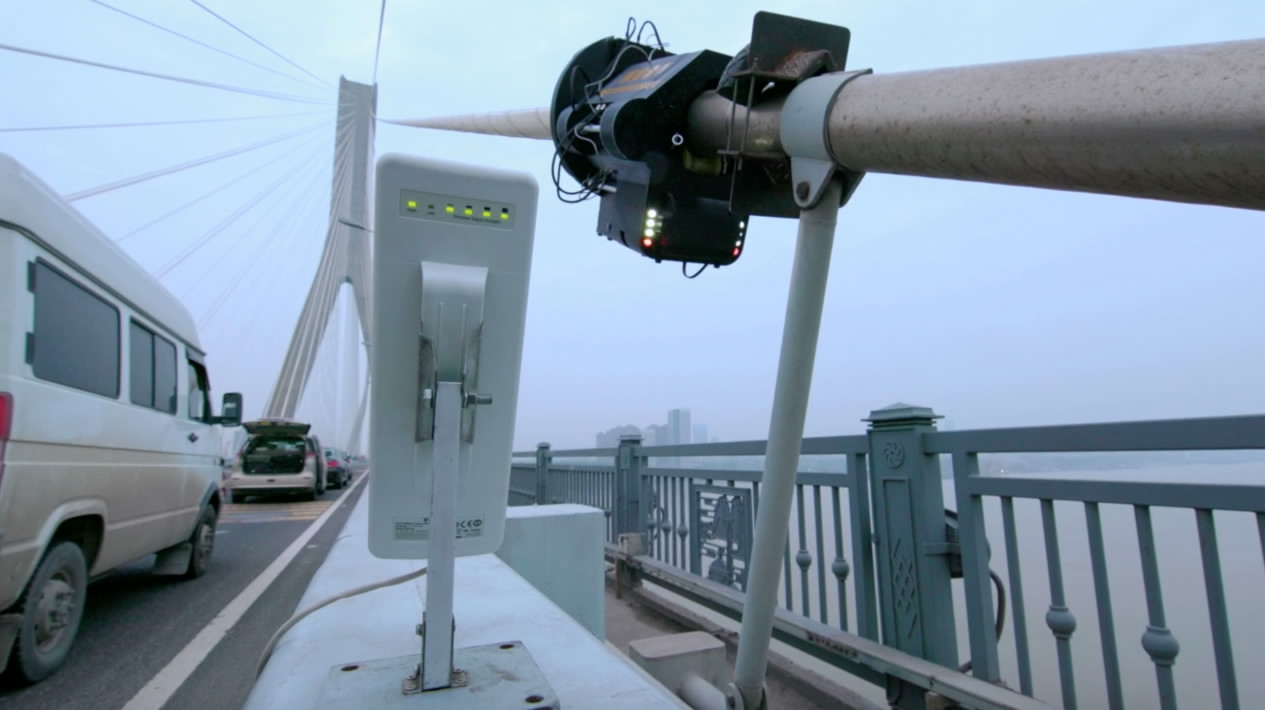
Tech & Sci
16:52, 21-Jul-2017
New technology helps maintain safety of major bridges

By CGTN's Yang Wentao and Zhu Qinliang
The Tianxingzhou Bridge across the Yangtze River in Wuhan is the world’s first cable-stayed road-rail bridge with two pylons and three cable planes.
Its main span measures 504 meters. Its cables carry a load of 20,000 tons, with the longest extending for 271.9 meters and capable of withstanding 1,250 tons in traction. The cables bear the load of the entire bridge; both the surface and internal wires are prone to damage in adverse environmental conditions, which makes proper maintenance vital.

The Tianxingzhou Bridge across the Yangtze River in Wuhan /CGTN Photo
The Tianxingzhou Bridge across the Yangtze River in Wuhan /CGTN Photo
A newly-developed wireless robot, which can work without a power supply, examines both the exterior and interior of the cables.

The newly-developed wireless robot is used to examine cables. /CGTN Photo
The newly-developed wireless robot is used to examine cables. /CGTN Photo
Wang Bo, director of the technology research at the China Railway Bridge Science Research Institute, said, “We used the Tianxingzhou Bridge to test our cable-testing robot. It has a high-definition camera to detect cracks in the cables’ polyethylene surface, we also mount devices on it to test for flaws in the steel wires which form the cable. The traditional examination method used a basket hung under the cable, the method relied on a complex mechanism to lift it and the people inside. This was very inefficient, it could examine only four cables a day. Our robot examines one cable in half an hour. It can carry on working, even after dark.”

Traditionally, inspecting bridge cables requires workers to get up close to check conditions. /CGTN Photo
Traditionally, inspecting bridge cables requires workers to get up close to check conditions. /CGTN Photo
Apart from the checks and maintenance done in the field, more advanced technology is used to monitor the bridge. Four-hundred kilometers away, engineers are studying the bridge's real-time status.
There are more than 300 sensors on the bridge, allowing engineers to monitor passing vehicles and the environmental impact. In-depth analysis by professional software helps assess the threat posed by overloaded vehicles, and the location and extent of any damage. Real-time transmission allows engineers to examine dynamic changes in the data via the internet from anywhere on the planet.
1045km

SITEMAP
Copyright © 2018 CGTN. Beijing ICP prepared NO.16065310-3
Copyright © 2018 CGTN. Beijing ICP prepared NO.16065310-3